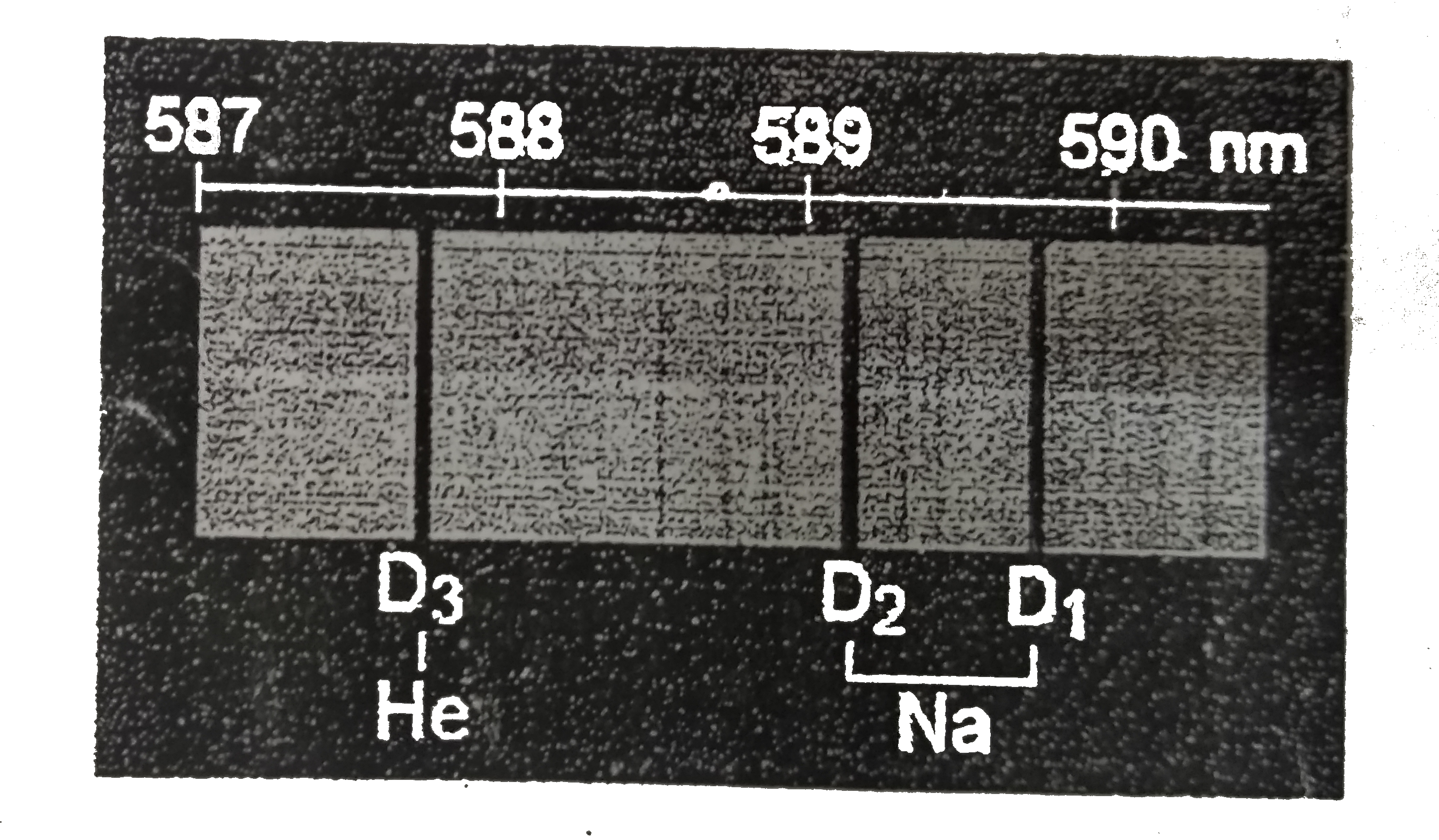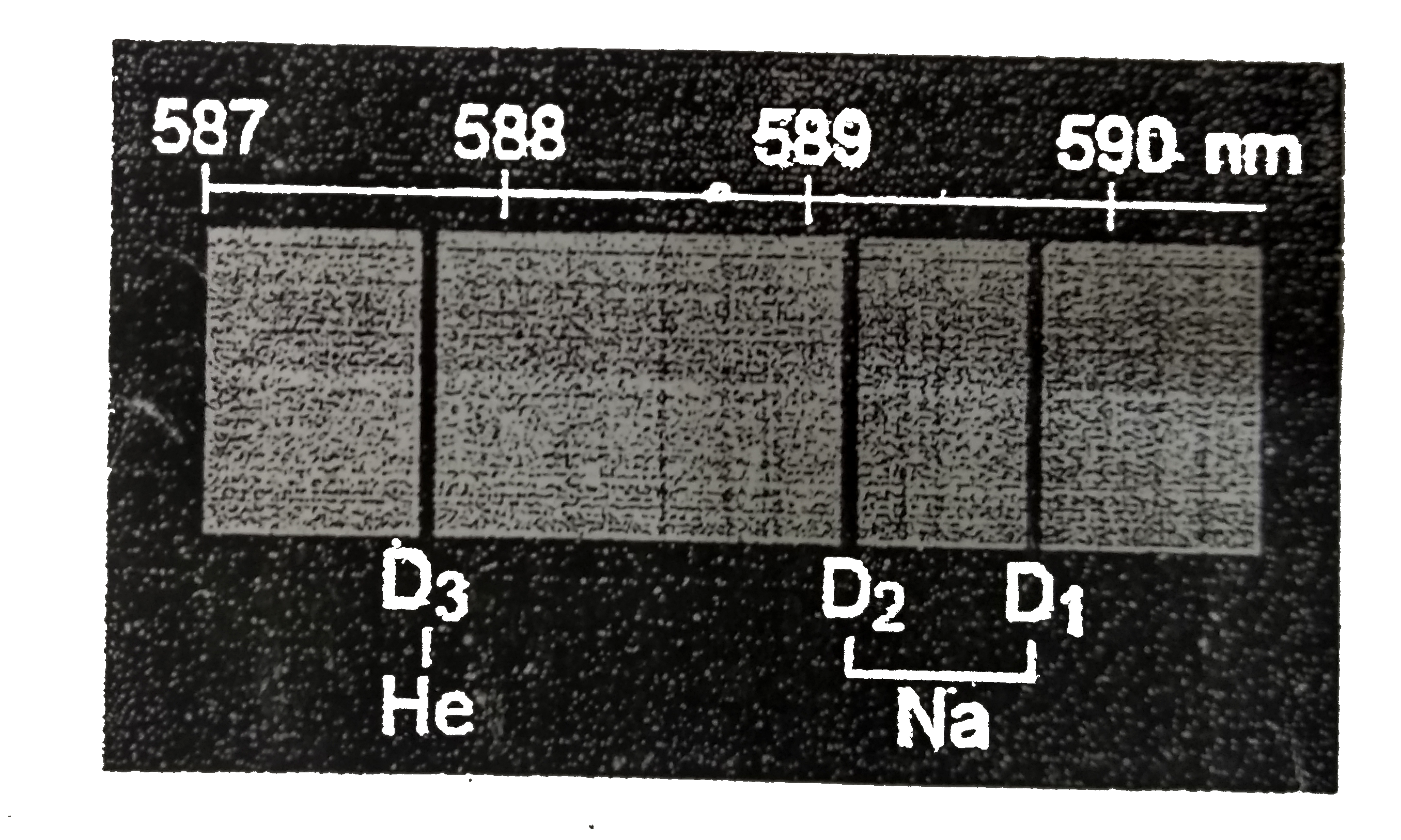In 1894, Lord Rayleigh reported that the mass of chemically prepared nitrogen was different from that of nitrogen extracted from the atmosphere, as shown in Tables 1 and 2. Latter, this difference was attributed to the presence of argon in atmospheric nitrogen. The masses of gases were mearsured by using a glass vessel with a known volume under atmospheric pressure (1.013×105Pa).
∣∣
∣
∣
∣
∣
∣
∣∣From nitric oxide2.3001gFrom nitrous oxide2.2990gFrom amonium nitrite purified at a red heat2.2987gFrom urea2.2985gFrom ammonium nitrite purified in the cold2.2987gMean2.2990g∣∣
∣
∣
∣
∣
∣
∣∣
∣∣
∣
∣
∣∣O2was removed by hot copper(1892)2.3103gO2was removed by hot iron(1893)2.3100gO2wasremovedbyferroushydrate(1894)2.3102gMean2.3102g∣∣
∣
∣
∣∣
Ramsay and cleve discovered helium in cleveite (a mineral consiting of uranium oxide and oxides of lead, thorium, and rare earths, an impure variety of uraninite) independently and virtually simultaneously in 1895. The gas extracted from the rock showed a unique spectroscopic line at around 588 nm (indicated by D3 in Figure 1), which was fist observed in the spectrum of solar prominence during a total eclipse in 1868, near the well-known D1 and D2 lines of sodium.

Which––––––– equation explains the occurrence of helium in cleveite among [A] to [D] below? Mark one.
.238U→.234Th+α
Uhe2→U+2He
.240U→.240Np+β−
.235U+n→.95Y+139l+2n
The correct Answer is:Considering that the a particle is the nucleus of helium a decay [A] is the relevent source of helium in such rocks. No compounds of He such as UHe2 in [B] is known to be stable at ambient temperature. [C] is a radioactive decay of 240U in the thorium series. [D] is a nuclear fission reaction of 235U occurring in nuclear reactors. Thus, the correct answer is [A]
Step by step video & image solution for In 1894, Lord Rayleigh reported that the mass of chemically prepared nitrogen was different from that of nitrogen extracted from the atmosphere, as shown in Tables 1 and 2. Latter, this difference was attributed to the presence of argon in atmospheric nitrogen. The masses of gases were mearsured by using a glass vessel with a known volume under atmospheric pressure (1.013xx10^(5)Pa). |{:("From nitric oxide",,2.3001 g),("From nitrous oxide",,2.2990 g),("From amonium nitrite purified at a red heat",,2.2987 g),("From urea",,2.2985 g),("From ammonium nitrite purified in the cold",,2.2987 g),("Mean",,2.2990 g):}| |{:(O_(2) "was removed by hot copper" (1892),,2.3103 g),(O_(2) "was removed by hot iron" (1893),,2.3100 g),(O_(2) "was removed by ferrous hydrate (1894),2.3102 g,),(Mean,,2.3102 g):}| Ramsay and cleve discovered helium in cleveite (a mineral consiting of uranium oxide and oxides of lead, thorium, and rare earths, an impure variety of uraninite) independently and virtually simultaneously in 1895. The gas extracted from the rock showed a unique spectroscopic line at around 588 nm (indicated by D3 in Figure 1), which was fist observed in the spectrum of solar prominence during a total eclipse in 1868, near the well-known D_(1) and D_(2) lines of sodium. ul("Which") equation explains the occurrence of helium in cleveite among [A] to [D] below? Mark one. by Chemistry experts to help you in doubts & scoring excellent marks in Class 12 exams.
Similar Questions
In 1894, Lord Rayleigh reported that the mass of chemically prepared nitrogen was different from that of nitrogen extracted from the atmosphere, as shown in Tables 1 and 2. Latter, this difference was attributed to the presence of argon in atmospheric nitrogen. The masses of gases were mearsured by using a glass vessel with a known volume under atmospheric pressure (1.013×105Pa).
∣∣ ∣ ∣ ∣ ∣ ∣ ∣∣From nitric oxide2.3001gFrom nitrous oxide2.2990gFrom amonium nitrite purified at a red heat2.2987gFrom urea2.2985gFrom ammonium nitrite purified in the cold2.2987gMean2.2990g∣∣ ∣ ∣ ∣ ∣ ∣ ∣∣
∣∣ ∣ ∣ ∣∣O2was removed by hot copper(1892)2.3103gO2was removed by hot iron(1893)2.3100gO2wasremovedbyferroushydrate(1894)2.3102gMean2.3102g∣∣ ∣ ∣ ∣∣
Ramsay and cleve discovered helium in cleveite (a mineral consiting of uranium oxide and oxides of lead, thorium, and rare earths, an impure variety of uraninite) independently and virtually simultaneously in 1895. The gas extracted from the rock showed a unique spectroscopic line at around 588 nm (indicated by D3 in Figure 1), which was fist observed in the spectrum of solar prominence during a total eclipse in 1868, near the well-known D1 and D2 lines of sodium.

Identify––––––––– the transition relevant to the D3 line of helium among the transitions [A] to [E] indicated in Figure 2. Mark one of the following:
[A] [B] [C] [D] [E]View SolutionHow do oxides of nitrogen enter the atmosphere ?
View Solution
Knowledge Check
- Question 1 - Select One
Which of the following alga fixes atmospheric nitrogen in soil
AAnabaenaBUlothrixCSpirogyraDFucus - Question 2 - Select One
Which of the following algae fixes atmospheric nitrogen in soil?
AAnabaenaBUlothrixCSpirogyraDFucus
How is atmospheric nitrogen fixed by the bacteria?
View SolutionWhy does the reactivity of nitrogen differ from phosphorus?
View SolutionA water fern capable of fixing atmospheric nitrogen and used as biofertilizer.
View SolutionUnder what conditions do the atmospheric nitrogen and oxygen react?
View SolutionWhich of the following plants cannot fix atmospheric nitrogen?
View SolutionWhat is the pressure on a swimmer 10m below the surface of lake? g=10ms−2, atmospheric pressure = 1.01×105Pa
View Solution

